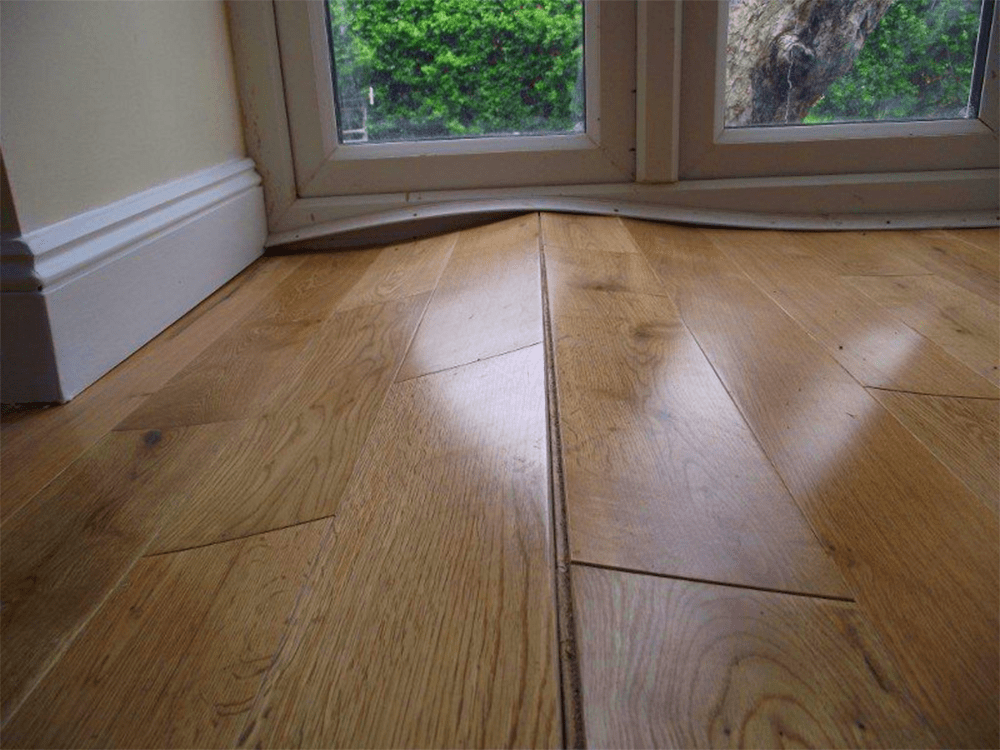How To Fix Buckled Wood Floors
Buckling is a common problem that can occur in wood floors, especially during changes in humidity and temperature. When wood absorbs moisture, it swells and expands, causing the planks to buckle and rise. Conversely, when wood loses moisture, it shrinks and contracts, which can also lead to buckling. While buckling can be unsightly and cause damage to the flooring, it can be repaired with the right tools and techniques.
Identifying the Cause of Buckling
Before attempting to repair buckled wood floors, it is important to identify the underlying cause of the problem. Some of the most common causes include:
- Moisture: Excess moisture can cause wood to swell and expand, leading to buckling. This can be caused by leaks, spills, or high humidity levels.
- Temperature: Extreme temperature changes can also cause wood to buckle. When wood is heated, it expands, while when it is cooled, it contracts. This can cause the planks to buckle as they try to adjust to the changing temperatures.
- Improper installation: Buckling can also be caused by improper installation, such as not leaving enough space between the planks or not using the correct fasteners.
Fixing Buckled Wood Floors
Once the cause of the buckling has been identified, the necessary repairs can be made. In some cases, simply addressing the underlying cause, such as fixing a leak or adjusting the humidity levels, may be enough to resolve the buckling. However, in other cases, more extensive repairs may be necessary.
If the buckling is minor and only affects a few planks, it may be possible to repair it by sanding down the high spots. This can be done using a belt sander or a hand sander. Once the high spots have been sanded down, the planks can be refinished to match the rest of the floor.
If the buckling is more severe, it may be necessary to remove and replace the affected planks. To do this, carefully remove the baseboards and molding around the perimeter of the room. Then, use a crowbar to pry up the buckled planks. Once the planks have been removed, the subfloor should be inspected for any damage. If the subfloor is damaged, it will need to be repaired before new planks can be installed.
To install the new planks, start by applying a layer of construction adhesive to the subfloor. Then, carefully place the new planks in place, making sure to leave a small gap between each plank. Once the planks have been installed, they can be nailed or stapled into place. Finally, the baseboards and molding can be reinstalled.
Preventing Buckled Wood Floors
Once buckled wood floors have been repaired, it is important to take steps to prevent the problem from recurring. Some of the most effective preventive measures include:
- Control moisture levels: Use a dehumidifier to control humidity levels in the home, especially during the summer months. Also, fix any leaks or spills promptly.
- Protect from extreme temperatures: Keep the home at a moderate temperature, especially during the winter and summer months. Avoid using space heaters or fireplaces that can cause extreme temperature fluctuations.
- Proper installation: Ensure that wood floors are installed correctly by a qualified professional. This includes leaving enough space between the planks and using the correct fasteners.

Buckled Hardwood Floors Job Analysis Why Fixes

Buckling Floor Solutions

How To Repair Buckled Hardwood Floor Top 6 Easy Steps

Water Damaged Buckled Hardwood Floor Repair Hudson Group

How To Repair Buckled Hardwood Floors Bona Com

Tips For Fixing Buckling Of Engineered Floors From The Forest Llc

Buckled Wood Floors Causes And Fixes Usvintagewood Com

Avoid Cupping And Buckling In Hardwood Floors Twenty Oak

Buckling Hardwood Floors Above Vented Crawl Spaces Ask The Expert Lowcountry Foundation Repair

How To Fix Warped Hardwood Floor Executive Touch Painters







